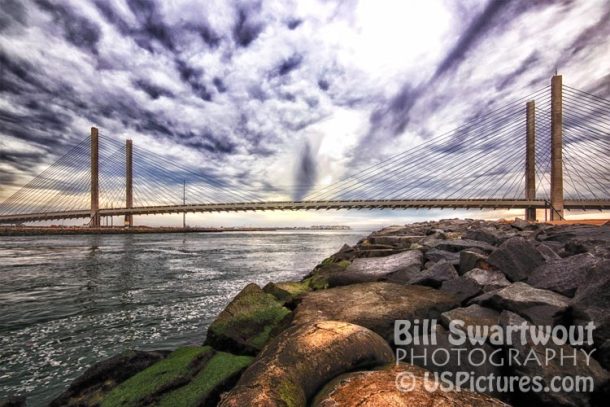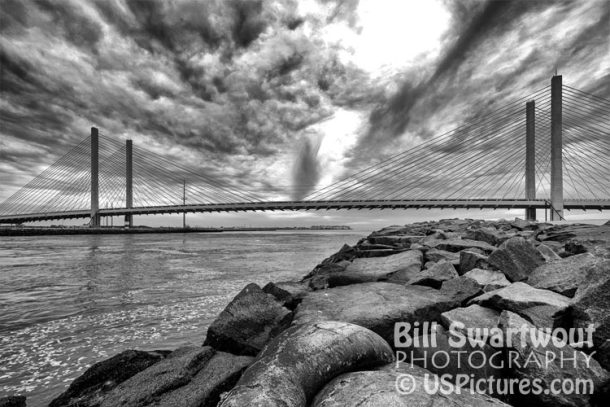After posting these photographs of the Charles W. Cullen Bridge over the Indian River Inlet in Sussex County, Delaware, I received several “likes” on Facebook, a few comments and a couple of questions. One question that made me reflect a bit was, “What lens did you use?”
A lot of people just use the “kit” lens that comes with their “good” camera (DSLR) or whatever lens is attached to their point-n-shoot. However, for spectacular scenery you sometimes need to go as WIDE as possible. Here’s the photo…

I used one of my favorite lenses, one that I’ve had for over 10 years. It is a Sigma Lens w/ Nikon Mount, 10-20mm f:4/5.6 Wide Angle “Zoom” lens. Back when I bought it the cost was a bit more than that of the camera I used it on. I have since worn out “that” camera but the lens works just fine on my new Nikon DSLR. For this particular view of “the bridge” the zoom was set to 11.5 mm (which would be the equivalent of 17 mm on a full-frame camera). The exposure was 1/200th of a second at f7.1 for the lens opening, or f-stop. I had the ISO (film sensitivity) set to 200 to maintain as much detail in the image as possible. (No, I am not that detailed of a person. All of that information, called exif data, is stored with the image file.)
Normally for a shot like that I like to use a tripod. But look at all those rocks I walked across – and you may understand why I left the tripod in the car. LOL Plus, there was really no way I could set the tripod up where I ended up for framing the picture.
Normal lenses are called “normal” because they are used primarily for normal pictures. When shooting scenic views you should consider using the “widest” view lens you have. When I get “lens envy” and think about the next lens I want I often long for that 400 mm Nikkor with an f2.8 aperture, But being more realistic I probably never will buy one. I wouldn’t get enough use out of a lens like that to justify the purchase price.
Here’s a B&W version of the above Indian River Bridge…same image…different editing.

This bridge has photographers always taking pictures at night. The blue lighting makes it look almost magical. I, of course have some of them, too. But don’t overlook the varying light conditions that can occur at any time of day or night. You just have to “see” what the possibilities hold for you.
See more of my photography at USPictures.com.